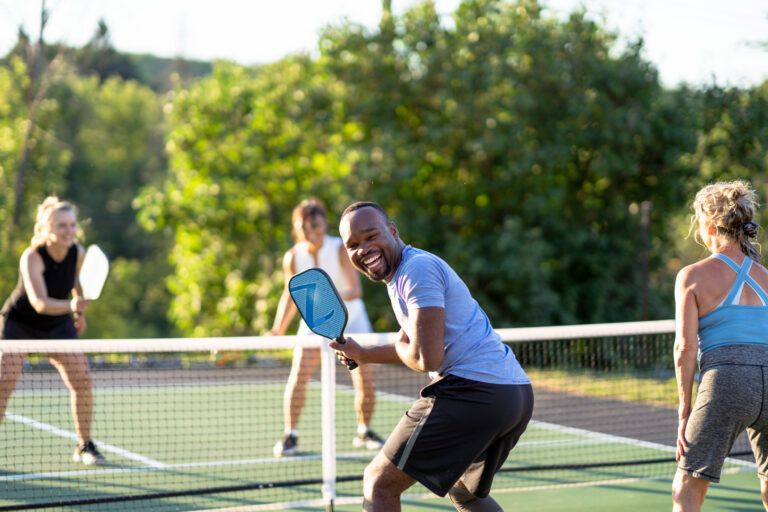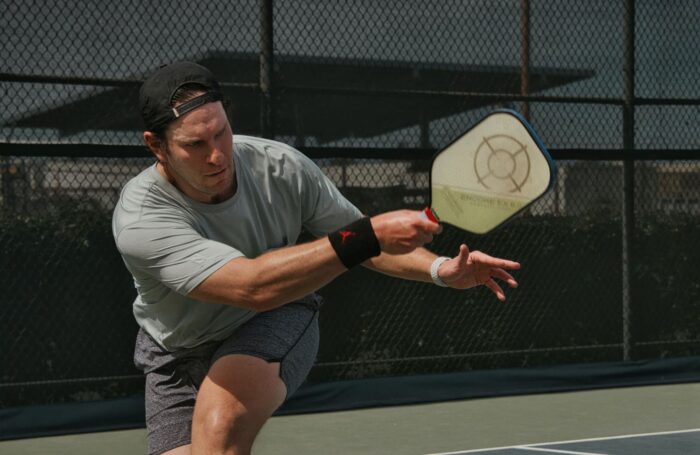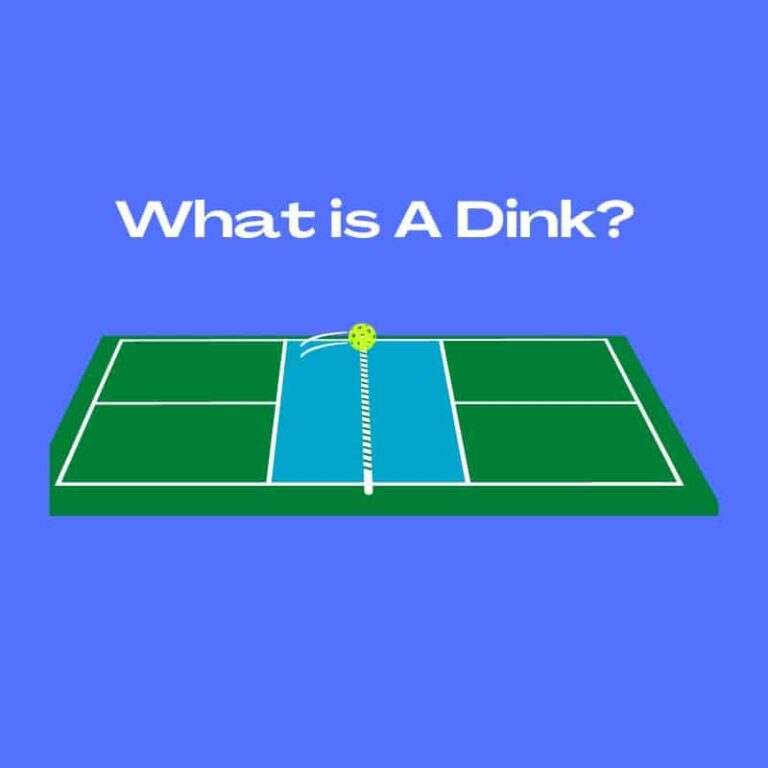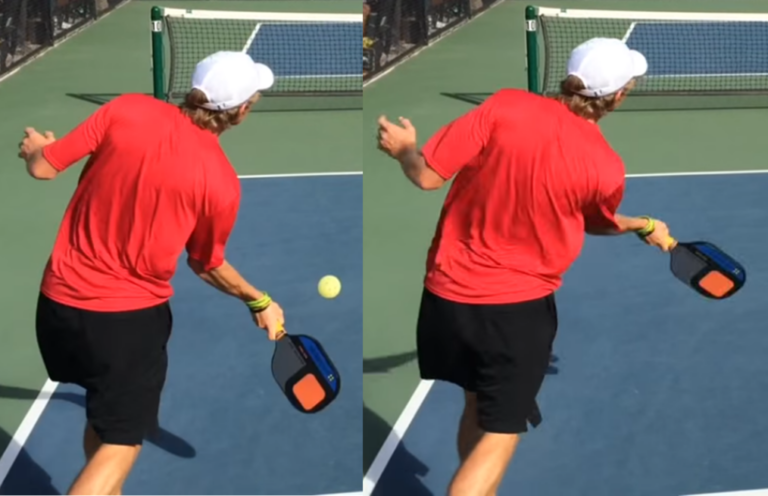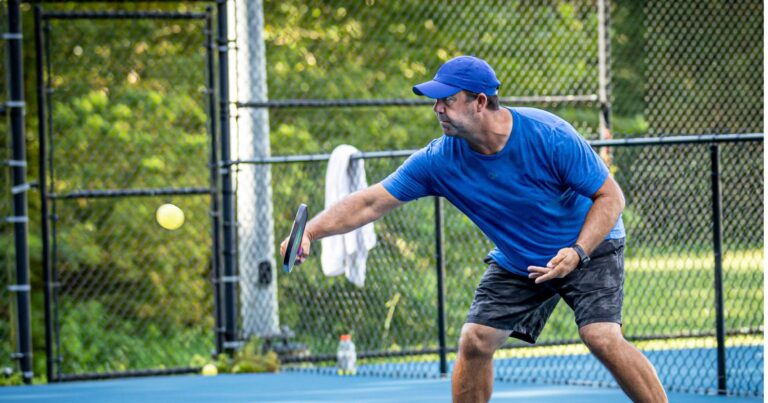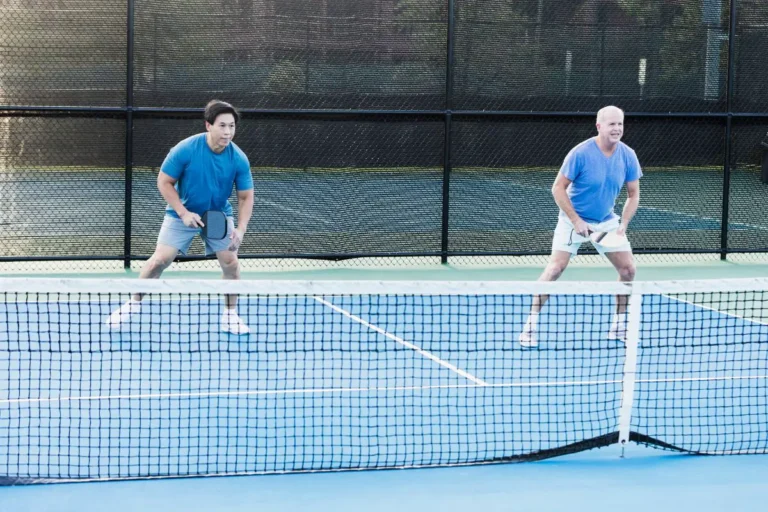Perfecting Pickleball Volleys: Top 10 Essential Tips You Need to Know
Perfecting your pickleball volleys is crucial for dominating the court. By incorporating these top 10 tips into your game, you’ll develop the control, power, and finesse needed to execute winning volleys consistently. From adopting the right stance to practicing targeted drills, this comprehensive guide will help elevate your skills to new heights.
- Adopt an Athletic Stance
- Master the Kitchen Line
- Optimize Paddle Orientation
- Utilize the Hammer Grip
- Control Grip Pressure
- Minimize Backswing
- Keep Volleys Low
- Practice Straight On and Moving Volleys
- Engage in Continuous Practice Drills
- Soft Response to Low Shots
In this comprehensive guide, we’ve compiled the top 10 tips to help you perfect your pickleball volleys and take your game to the next level. Whether you’re a beginner or an experienced player, these strategies will help you develop the control, power, and finesse needed to dominate the kitchen line and win more matches.
Tip #1: Adopt an Athletic Stance
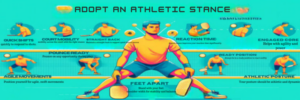
The foundation of a solid pickleball volley starts with your stance. Adopting the right athletic position will not only improve your reaction time but also enhance your overall mobility on the court.
To achieve the optimal stance:
- Stand with your feet shoulder-width apart
- Keep your knees slightly bent
- Distribute your weight evenly between your feet
- Maintain a low center of gravity, with your back straight and core engaged
This posture will enable you to move quickly and efficiently, allowing you to respond to your opponent’s shots with greater agility.
Remember, the key to a successful volley is being ready to react at a moment’s notice. By maintaining an athletic stance, you’ll be poised to pounce on any opportunity that comes your way.
Tip #2: Master the Kitchen Line
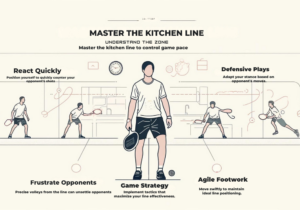
The kitchen line, or the non-volley zone, is a critical area of the pickleball court. Mastering your positioning and strategy around this line can significantly impact your ability to execute effective volleys.
When volleying, strive to maintain a position just behind the kitchen line, with your weight balanced and your paddle ready to strike. This placement will allow you to react quickly to your opponent’s shots and minimize their opportunities to score.
Defensively, be mindful of your opponent’s positioning in relation to the kitchen line. If they are encroaching on the non-volley zone, consider lobbing the ball high to force them back or consider a dink shot to keep the rally going.
By understanding the importance of the kitchen line and strategizing accordingly, you’ll be better equipped to control the tempo of the game and frustrate your opponents with your precise and well-timed volleys.
Tip #3: Optimize Paddle Orientation
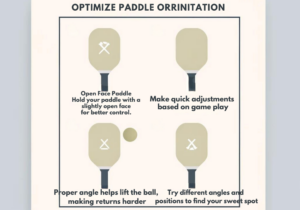
The orientation of your paddle can have a significant impact on your ability to execute effective volleys. Experiment with different paddle angles to find the sweet spot that allows you to strike the ball with maximum control and power.
Generally, you’ll want to:
- Hold your paddle with a slightly open face
- Angle the paddle slightly upward
This positioning will enable you to lift the ball and keep it low, making it more challenging for your opponent to return. Additionally, be mindful of your paddle’s position relative to your body – try to keep it close, with your elbow tucked in, to facilitate quick and efficient movements.
Remember, the key to mastering paddle orientation is practice and experimentation. Pay attention to how adjustments in your grip and paddle angle affect the trajectory and spin of your volleys, and make adjustments accordingly.
Tip #4: Utilize the Hammer Grip
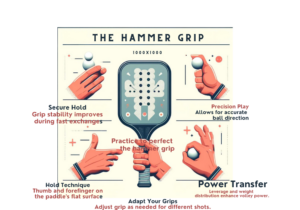
The hammer grip, a common technique in pickleball, can be a game-changer when it comes to executing powerful and controlled volleys. This grip, which involves holding the paddle with your thumb and forefinger on the flat surface of the paddle and your remaining fingers wrapped around the handle, provides several benefits:
| Benefit | Explanation |
|---|---|
| Increased Stability | The hammer grip allows for a more stable and secure hold on the paddle, which can be particularly beneficial when executing quick, reactive volleys. |
| Enhanced Control | The positioning of your fingers on the flat surface of the paddle gives you greater control over the paddle’s face, enabling you to direct the ball with precision. |
| Improved Power Transfer | The hammer grip’s leverage and weight distribution can help you generate more power and speed in your volleys, making them more challenging for your opponent to return. |
Incorporating the hammer grip into your pickleball arsenal can be a game-changing adjustment, so be sure to practice and get comfortable with this technique.
Tip #5: Control Grip Pressure
Maintaining the right grip pressure is essential for executing effective pickleball volleys. The key is to find the right balance between a firm, stable hold and a soft, responsive touch.
When volleying, aim for a light, relaxed grip, with just enough pressure to maintain control of the paddle. This soft grip will allow you to feel the ball’s impact and adjust your swing accordingly, helping you generate precise, controlled volleys.
Conversely, when faced with more challenging shots or when you need to generate more power, you can increase your grip pressure slightly to maintain stability and control. This adjustment can be particularly useful when dealing with hard-hitting or low-bouncing shots.
Remember, the optimal grip pressure can vary depending on the situation, so be prepared to make subtle adjustments as you navigate the court. By mastering this skill, you’ll be able to execute volleys with the perfect combination of power and finesse.
Tip #6: Minimize Backswing
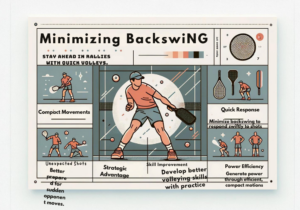
In pickleball, the key to effective volleying is generating power through compact, efficient movements. Minimizing your backswing is a crucial aspect of this strategy, as it allows you to respond quickly to your opponent’s shots and maintain control of the rally.
When volleying, aim to keep your backswing as short and compact as possible. This approach will enable you to generate the necessary power while minimizing wasted motion and maximizing your reaction time. By minimizing your backswing, you’ll be better equipped to react to unexpected shots and maintain the upper hand in the rally.
Additionally, a compact backswing will help you keep your volleys low and challenging, making it more difficult for your opponent to return them effectively.
Tip #7: Keep Volleys Low
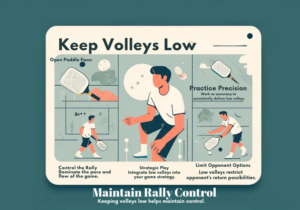
One of the hallmarks of a skilled pickleball player is the ability to execute low, challenging volleys. By keeping your volleys close to the net, you can effectively limit your opponent’s options and force them to hit up on the ball, potentially leading to errors or easy opportunities for you to attack.
To keep your volleys low:
- Focus on striking the ball with a slightly open paddle face
- Use a smooth, controlled swing
- Avoid hitting the ball with a steep, downward angle
Additionally, be mindful of your positioning relative to the kitchen line. Staying close to the line will allow you to reach low-bouncing shots more easily and maintain control of the rally.
By consistently delivering low, challenging volleys, you’ll not only frustrate your opponents but also create more opportunities to seize control of the point and secure the win.
Tip #8: Practice Straight On and Moving Volleys

To truly master the art of the pickleball volley, you must be comfortable executing both straight-on and moving volleys. Each type of volley requires slightly different techniques and positioning, so it’s essential to incorporate both into your practice routine.
Straight-on volleys, where you strike the ball directly in front of you, require a more controlled and stable swing. Focus on maintaining a solid stance, keeping your paddle face open, and making clean, crisp contact with the ball.
Moving volleys, on the other hand, involves hitting the ball while in motion, either to your left or right. These shots require greater agility, footwork, and quick decision-making. Practice moving laterally to the ball, keeping your weight balanced, and striking with a smooth, confident swing.
By dedicating time to perfecting both straight-on and moving volleys, you’ll develop the versatility and adaptability needed to handle any situation that arises on the pickleball court.
Tip #9: Engage in Continuous Practice Drills
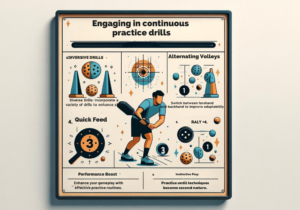
Consistent, targeted practice is the key to mastering the art of pickleball volleys. Incorporate a variety of drills into your training routine to challenge yourself and continually improve your skills.
Some effective drill examples include:
- Figure 8: Set up two cones or markers, one on either side of the net, and practice hitting volleys back and forth in a figure-8 pattern.
- Quick Feed: Have a partner feed you a series of quick, low volleys, challenging you to respond with precision and control.
- Alternating Volleys: Practice alternating between forehand and backhand volleys, working on your ability to quickly adjust your paddle and footwork.
- Pickleball Rally Scoring: Incorporate rally scoring into your practice sessions to simulate game-like conditions and pressure.
By engaging in these and other targeted practice drills, you’ll develop the muscle memory, court awareness, and decision-making skills needed to execute winning volleys in live gameplay.
Remember, the more you practice, the more natural and instinctive these techniques will become, allowing you to seamlessly incorporate them into your pickleball strategy.
Tip #10: Soft Response to Low Shots
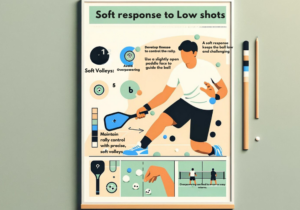
When faced with low, challenging shots near the kitchen line, it’s crucial to respond with a soft, controlled volley. Attempting to overpower these types of shots can often lead to errors or easy opportunities for your opponent.
Instead, focus on absorbing the ball’s energy with a gentle, cushioned swing. This soft response will allow you to keep the ball low and in play, forcing your opponent to hit up on the ball and potentially make a mistake.
To execute this technique effectively:
- Maintain a relaxed grip
- Use a slightly open paddle face
- As the ball makes contact, gently guide it back over the net
Mastering the art of the soft volley is a game-changer, as it allows you to maintain control of the rally and frustrate your opponents with your finesse and ball placement.
Conclusion
Perfecting your pickleball volleys is essential for taking your game to the next level. By incorporating these top 10 tips into your practice and gameplay, you’ll develop the control, power, and adaptability needed to dominate the court and outmaneuver your opponents.
Remember, the key to success is consistent, targeted practice. Dedicate time to honing your skills, experimenting with different techniques, and incorporating these strategies into your pickleball arsenal. With dedication and persistence, you’ll soon be executing winning volleys with ease and confidence.
So, what are you waiting for? Get out on the court and start putting these tips into action! Your path to pickleball mastery awaits.

